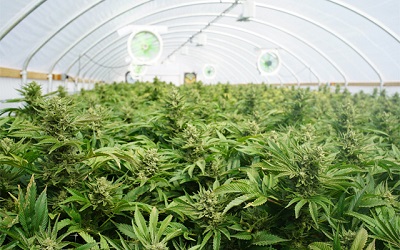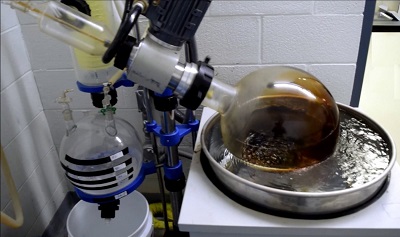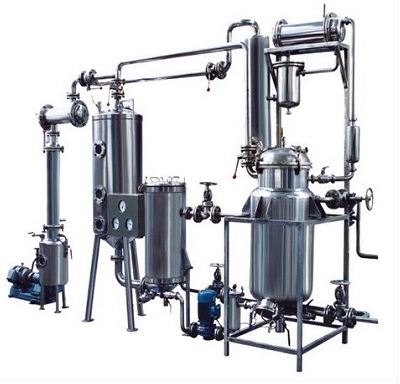One of the more popular extraction methods for commercial producers of cannabis concentrates and extracts. CO2 extraction utilizes a combination of supercritical and subcritical extraction techniques, making it a very costly process that yields high volumes of oils and waxes from the cannabis plants.
In this article we will be going through some of the steps used during the CO2 extraction process, and why its a more popular option despite the costs involved.
Contents
What are Supercritical and Subcritical Techniques?
When a gas like CO2 is exposed to the right pressure and temperature conditions . It reaches a fluid state where it is neither completely gas nor completely liquid, instead having the properties of both phases. In this state CO2 makes for an excellent green solvent that can safely be used to extract the oils from most parts of the cannabis plant.
These fluids are known as supercritical fluids and have almost no surface tension. They will easily diffuse through solid plant material like a gas, making its way into the cannabis’ cuticles found in the plants trichomes. Where like a liquid, it will dissolve all of the oils that it comes in contact with, removing them from the plant as the fluid repeatedly passes through the material.
The techniques used to heat the CO2 and compress it into a supercritical fluid, can break down and dissolve a majority of the cannabis plant’s martial. Leaving behind the desired terpenes, waxes and cannabinoids.
When this fluid is then moved into a separator vessel. It is exposed to a temperatures and pressures, that changes its composition. Allowing the removal of the CO2 to begin.
Why CO2 Extraction Is Popular
Despite the high costs of setting up a supercritical extraction system. CO2 processing remains one of the most popular and cost effective methods available to date. It can yield a large volume of concentrate that can be further refined into various products.
CO2 is tasteless, odorless, and colorless, making it an ideal solvent for collecting oils. It requires relatively low heat and pressure to reach its supercritical state, which doesn’t damage or change the chemical structure, taste and aroma of the oils contained within the cannabis plants. As a result it has little to no effect on the quality of the end product, meaning high quality material going in, will yield high quality products.
The extraction process is relatively fast and efficient, taking only mere hours to finish processing the material into its waxes and oils. CO2 gas is also non-combustible and easily recollected. Under the right temperature and pressure CO2 will return to its gaseous form allowing it to be removed from the collected material and reused for future production. Any CO2 that might be left in the end products is perfectly safe as its a natural chemical that the body can easily absorb and process.
From Start To Finish – The CO2 Process
From start to finish, here is the basic step by step process for CO2 collection.
Cultivating

In order to collect the desired compounds such as CBD or THC cannabinoids. It is highly important to start with plants that have higher concentrations of the targeted compound(s). Cannabis strains such as AC-DC have higher concentrations of CBD, while strains such as Bruce Banner have higher concentrations of THC.
Picking the correct strain with the highest concentration, must be considered long before production can begin. Cultivating and propagating will then involve the nurturing of plants sourced from a combination of cloning and seedlings.
Using either artificial lighting or natural sunlight, fertilizer and an irrigation system. Plants are brought to maturity and then either harvested when the buds develop or when the plants reach a set height. The defining factor for when a plant is harvested is decided by when the highest concentrations of the required compounds can efficiently be harvested.
Harvesting and Preparing
The parts of the cannabis plant with the highest concentrations of the required compounds are collected, dried out and ground up. For CBD collection more of the plant can be used including buds, sugar leaves, drooping leaves, stems and stalks. The over all desired quality of the end product is what limits which parts of the plant can be used for CBD collection. While THC collection is limited mostly to the buds and sugar leaves.
Closed Loop Production
Once the material has been harvested, dried out and ground into powder. It is then fed into the air tight chamber of a closed loop supercritical extraction system. This chamber is then filled with CO2 gas, pressurized and temperatures are brought to the point that the CO2 gas becomes a supercritical fluid.
Over a period of time, the material is broken down and dissolved. At which point it is filtered to remove any leftover solid material and impurities from the solution.
CO2 supercritical fluid (or scCO2) can have its dissolving properties changed simply by adjusting the pressure it’s under. Once filtered, the solution is moved into an extraction vessel, where the pressure is adjusted to facilitate the separation of various compounds. The solution may go through various extraction vessels before reaching the final extraction process.
In the final extraction vessel the scCO2 is brought back to normal atmospheric pressure and temperature, and where evaporation occurs. The CO2 evaporates out of the oil, leaving behind pure essential oils, and the CO2 itself is collected for future use.
Winterizing
Some closed loop systems have built in chill chambers that start the winterizing process. Others require the end product to be stored in separate chillers following extraction. A fully closed loop system will guarantee that there are no contaminants in the end product, while a manual storage system does run the risk of exposing the end products to bacteria or particles following extraction.
Winterizing is the process of chilling the concentrates to separate the oils from the waxes, as waxes are not suitable for some products.
Rotovap

Golden Oil, the viscous concentrate that is extracted by the CO2 process, is soaked in ethanol. Once dissolved this Golden Oil + ethanol solution is put through a process called Rotovap, where it is gently rotated over low heat. The ethanol is evaporated and collected for future use. The leftover oil is collected and used as in products like CBD oils and edibles.

Leave a Reply
You must be logged in to post a comment.